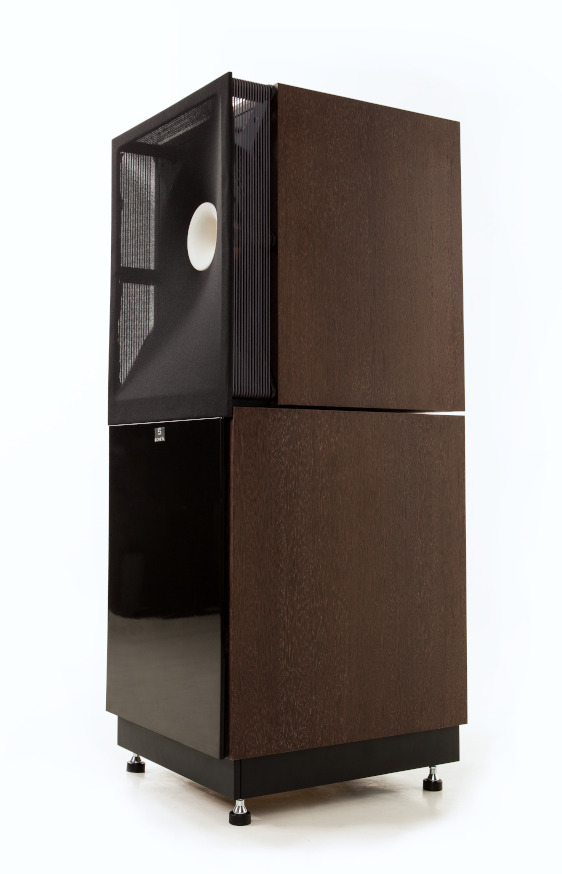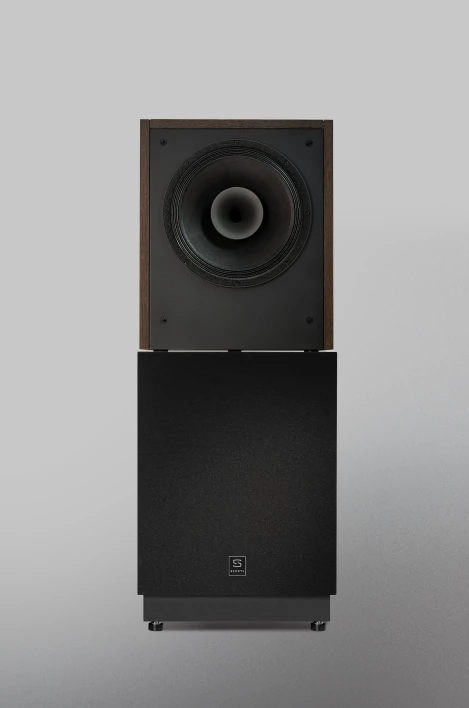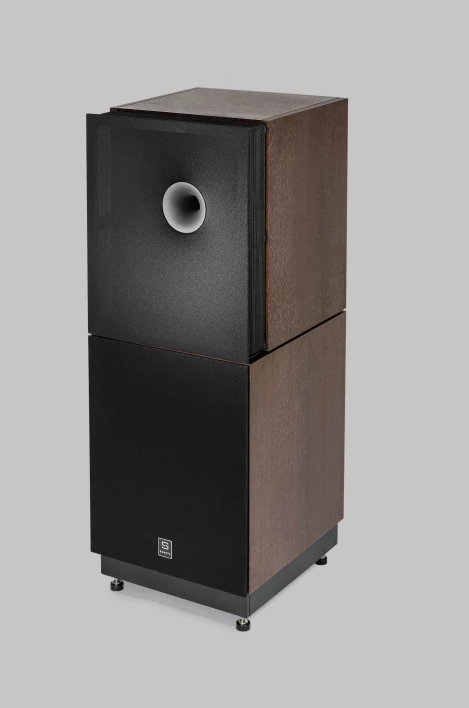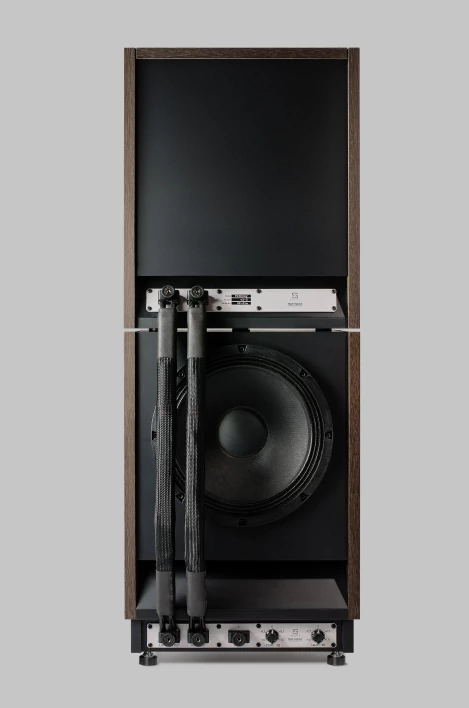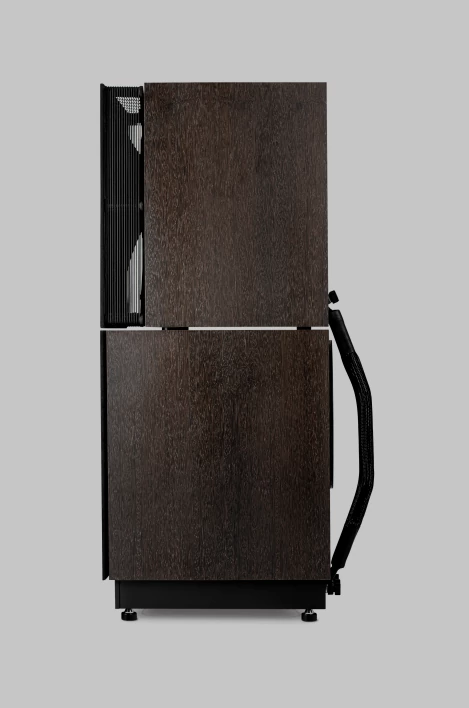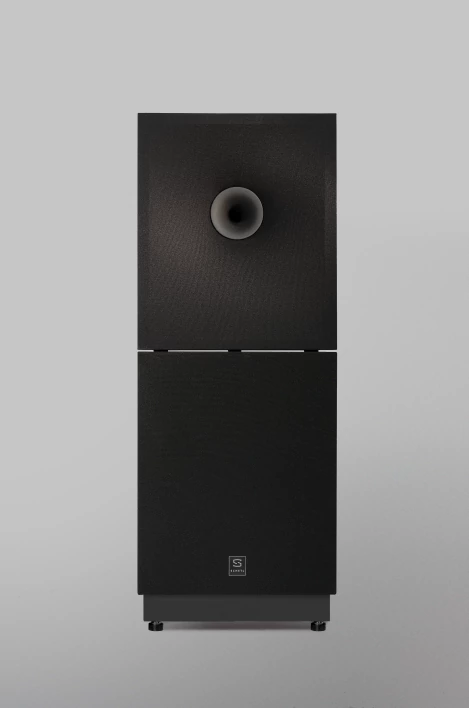
PATHWAY
2x12” Two and Half Way
Fully Passive Floorstanding UETL ScaleAx Loudspeaker
UETL: The promise of all at once
Our first product launched in High End Munich in 2022, the PATHWAY is based on our enclosure design principle, Under-Excited Transmission Line (UETL), which can be consider as very special case of transmission lines. It is not only cleaner and faster in the low and low-mid range than conventional TL, but also works exceedingly at very high motor strength/moving mass ratio.
During development, we found that if we wanted to approximate the sound quality of a bass horn in a smaller size, we couldn't use a loudspeaker with a weaker magnetic field / higher moving mass than would work well in a horn, despite all the known sizing rules. This has become quite obvious in our first, modest experiments. We now have plenty of ammunition to explain the phenomenon.
Since no dedicated speaker model existed, the development process involved writing custom acoustic modelling scripts to simulate new speaker concepts. These scripts provided the basis for the physical implementation of the first experiments. The shape of the final UeTL is at best similar to an inverted horn without a pressure chamber (actually it is not), i.e. no acoustic low-pass filtering at the excitation. This is a forced analogy, but in terms of operation, it can be seen as a kind of transition between a Transmission Line and a very low Q reflex cabinet.
Controlled
The description of the desired goal sounds like a tricky advertisement: a loudspeaker principle that evokes the qualities of the big bass horns, in a much more modest size. But we realised that the project was beginning to be a success: the level of control was such that some listeners were confused and asked similar questions:
- Is it a closed box? But it can't be... so what the heck is this?
No transient compression
Transient compression is essentially unknown here. The flow is free, continuous and abundant, and the drivers developed for this project, have extremely low losses. This makes the sound airy and "brutal", even brutally airy. In other words, due to there are virtually no limits, the sound remains absolutely airy over the long term across the full bandwidth and at all tolerable sound pressures. It's fascinating.
Sensitive and grip
The UETL principle means that a low-efficiency, weakly magnetic driver is not needed for good bass extension, so the movement of the swinging system is dominated by a huge gap induction. Among its other benefits, it minimises the losses and distorting effects of mechanical anomalies in the suspension. Furthermore, as it has an average impedance of over 10 Ohms with a smooth impedance and electrical phase response, it is easily driven by even low-power triode amplifiers.
Unwanted transmission line resonances eliminated
Under-excitation means that the Q factor of the system is low. This not only promises a good impulse response, but also means that secondary resonances are much less developed, or more precisely, less excited. Even with very little damping material, the sound is even and smooth, like a ported (reflex) or a passive diaphragm loudspeaker, but without the usual sluggish, one-plane character of the latter.
Controlled directivity also in the bass range - open and colorful bass-midrange
Impressively textured, coherent, colourful and deep. The sonic openness of the open baffle is confidently delivered, moreover, the controlled directivity makes it much more tolerant of placement and acoustic environment.
A truly sophisticated large coax - SCALEAX
We wanted to bring back the vibrant charm of the legendary sensitive coaxial drivers of the past. But at the same time we definitely wanted to go far beyond them: to create a modern, neutral but organic sound.
This vision gave life to the SCALEAX driver, optimized over the years. A 12 inch unit with a particularly balanced directional characteristic allowing 3 kHz crossover frequency. The tweeter horn unit shaped by individual function, forming a quasi-constant directivity horn. However, it also acts as a phase optimising plug. Thus, a very powerful motor with a moving mass of 32 g contributes to a coherent sound at such a high frequency.
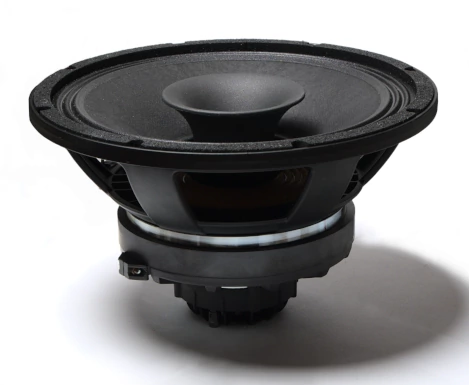

We assemble the Scaleax drivers in-house, with components from three different European manufacturers and our own production.
The construction
The PATHWAY is a fully passive, two and a half-way design, consisting of two separate cabinets, isolated and stacked on top of each other. The SCALEAX coaxial speaker is located in the top unit which radiates full range. In the lower section there is a 12-inch woofer, rear-facing, with similar parameters as the Scaleax driver. But this driver is offset to the optimal position on the lower UETL axis. Thus, the tipically messy overlap in the 2 and 1/2 way systems is completely cleared. It supports the range below 250 Hz, so a sensitivity of 96 dB/W can be achieved. This, combined with the impedance curve kept in mind at the design stage, makes it tube-friendly. The typical lower room response is around 30 Hz, with an upper cut-off frequency of 24 kHz.
The passive crossover network in the plinth is housed in an acoustically separated cavity. The woofer section contains an electrically first-order filter circuit. The crossover of the low-midrange and the high range is second order. The components used are of very high quality, selected through careful listening tests in the final stages of development. Rotary switches are used to adjust the final balance to the room acoustic conditions. The connection between the plinth and the top box is achieved by the supplied carbon cables.
The cabinets are made of premium quality beech multiplex plywood. This, combined with the strategic and functional stiffeners, makes the structure extremely robust.
What does this mean overall?
The well-recorded human voice gives you goose bumps, and you can almost breathe the air of the concert hall. The spatial representation is flawless, the depth almost unlimited. The bass is stunningly tactile, yet airy and tight. Yes, maybe better than a huge dipole.
Drive and rhythm: search for a term, we haven't found one yet. It is difficult to hear something similar, but there are plenty of adjectives. A good approach is to say that this ability is mainly found among bass horns.
Technical Specifications
Coaxial fullrange unit Low-midrange: 12" paper cone High range driver: 1.7" titanium diaphragm compression driver Highrange horn material: high-density composite polymer Bass unit Diaphragm: 12" paper cone Complete system Sensitivity @1W/1m: 95...96 dB depending on BS setting Crossover frequencies: 250 Hz, 3kHz Recommended room size: 30...100 m2 Recommended amplifier: >10W Nominal impedance: 8 Ω Connection: Cardas Patented Binding Post Supplied plinth: SoundCare Superspike M8 Dimensions, W x H (with feet) x D: 408 x 1097 x 470 mm Total weight, net: 62 kg / side, 124 kg / pair Packaging: 4 separate boxes, each <40 kg Available finishes
Veneers, matt-silk lacquer: Elm, European Walnut, Picled Wenge Available soon: Mahogany, Cherry, Oak - Please ask for current offers Monochrome high gloss finishes: Black, White Lower front: acoustic cloth option Warranty
5 years.

